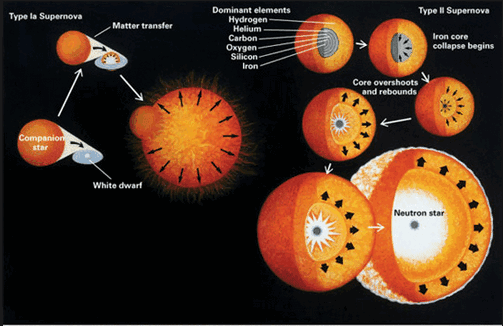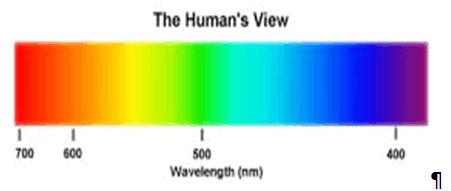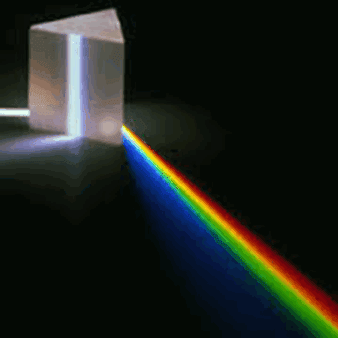As a star's core shrinks, the intensity of radiation from that surface increases, creating such radiation pressure on the outer shell of gas that it will push those layers away, forming a planetary nebula. If what remains after the outer atmosphere has been shed is less than 1.4 solar masses, it shrinks to a relatively tiny object about the size of Earth, known as a white dwarf. White dwarfs lack the mass for further gravitational compression to take place. The electron-degenerate matter inside a white dwarf is no longer a plasma, even though stars are generally referred to as being spheres of plasma. Eventually, white dwarfs fade into black dwarfs over a very long period of time.
In larger stars, fusion continues until the iron core has grown so large (more than 1.4 solar masses) that it can no longer support its own mass. This core will suddenly collapse as its electrons are driven into its protons, forming neutrons, neutrinos and gamma rays in a burst of electron capture and inverse beta decay. The shockwave formed by this sudden collapse causes the rest of the star to explode in a supernova. Supernovae become so bright that they may briefly outshine the star's entire home galaxy. When they occur within the Milky Way, supernovae have historically been observed by naked-eye observers as "new stars" where none seemingly existed before.
Supernova explosions blow away most of their stars' matter (forming nebulae such as the Crab Nebula). There remains a neutron star (which sometimes manifests itself as a pulsar or X-ray burster) or, in the case of the largest stars (large enough to leave a remnant greater than roughly 4 solar masses), a black hole. In a neutron star the matter is in a state known as neutron-degenerate matter, with a more exotic form of degenerate matter, QCD matter, possibly present in the core. Within a black hole the matter is in a state that is not currently understood.
The blown-off outer layers of dying stars include heavy elements, which may be recycled during the formation of new stars. These heavy elements allow the formation of rocky planets. The outflow from supernovae and the stellar wind of large stars play an important part in shaping the interstellar medium.
In larger stars, fusion continues until the iron core has grown so large (more than 1.4 solar masses) that it can no longer support its own mass. This core will suddenly collapse as its electrons are driven into its protons, forming neutrons, neutrinos and gamma rays in a burst of electron capture and inverse beta decay. The shockwave formed by this sudden collapse causes the rest of the star to explode in a supernova. Supernovae become so bright that they may briefly outshine the star's entire home galaxy. When they occur within the Milky Way, supernovae have historically been observed by naked-eye observers as "new stars" where none seemingly existed before.
Supernova explosions blow away most of their stars' matter (forming nebulae such as the Crab Nebula). There remains a neutron star (which sometimes manifests itself as a pulsar or X-ray burster) or, in the case of the largest stars (large enough to leave a remnant greater than roughly 4 solar masses), a black hole. In a neutron star the matter is in a state known as neutron-degenerate matter, with a more exotic form of degenerate matter, QCD matter, possibly present in the core. Within a black hole the matter is in a state that is not currently understood.
The blown-off outer layers of dying stars include heavy elements, which may be recycled during the formation of new stars. These heavy elements allow the formation of rocky planets. The outflow from supernovae and the stellar wind of large stars play an important part in shaping the interstellar medium.




















0 comments:
Post a Comment